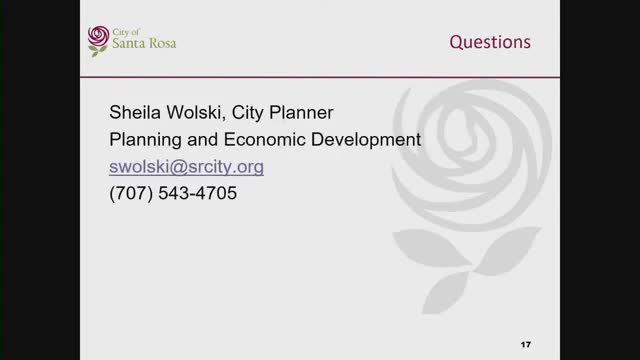City Council approves 2024 general plan with missing middle housing initiative
April 02, 2025 | Santa Rosa City, Sonoma County, California
Thanks to Scribe from Workplace AI and Family Portal , all articles about California are free for you to enjoy throughout 2025!

This article was created by AI using a video recording of the meeting. It summarizes the key points discussed, but for full details and context, please refer to the video of the full meeting. Link to Full Meeting
City staff, led by supervising planner Amy Nicholson, presented a comprehensive overview of the annual report, which included the much-anticipated missing middle ordinance. This initiative aims to introduce gentle density housing options—structures that blend seamlessly into neighborhoods while providing more living units. These homes, typically two to three stories tall, are designed to be located in walkable areas, reducing the need for extensive parking and fostering a sense of community.

Before you scroll further...
Get access to the words and decisions of your elected officials for free!
Subscribe for FreeCouncil member Benuellos raised concerns about the ordinance, reflecting community chatter regarding its implications. Nicholson reassured the council that the missing middle housing initiative is a crucial part of the city's general plan update, which will be further discussed in the coming months. The ordinance is expected to be presented in detail later this summer, setting the stage for a new chapter in Santa Rosa's housing landscape.
However, the meeting also brought to light the challenges facing the city in meeting its Regional Housing Needs Allocation (RHNA) numbers. Council member McDonald expressed apprehension about the rising costs of construction, which could hinder developers from delivering affordable housing. City officials acknowledged these concerns, noting that while the city does not directly develop housing, it is actively working with developers to secure funding and streamline processes for affordable projects.
The discussion also touched on the definition of missing middle housing, clarifying that while these units may be smaller and potentially more affordable, they are not mandated to be deed-restricted for low-income households. This distinction is crucial as the city navigates the complexities of housing affordability and availability.
As the meeting drew to a close, the council unanimously approved the 2024 general plan, inclusionary housing, and growth management annual review report, signaling a commitment to addressing the housing crisis head-on. With the passing of this motion, Santa Rosa is poised to take significant steps toward creating a more inclusive and accessible housing market, reflecting the needs and aspirations of its diverse community.
Converted from City of Santa Rosa City Council April 1st, 2025 meeting on April 02, 2025
Link to Full Meeting
Comments
View full meeting
This article is based on a recent meeting—watch the full video and explore the complete transcript for deeper insights into the discussion.
View full meeting




